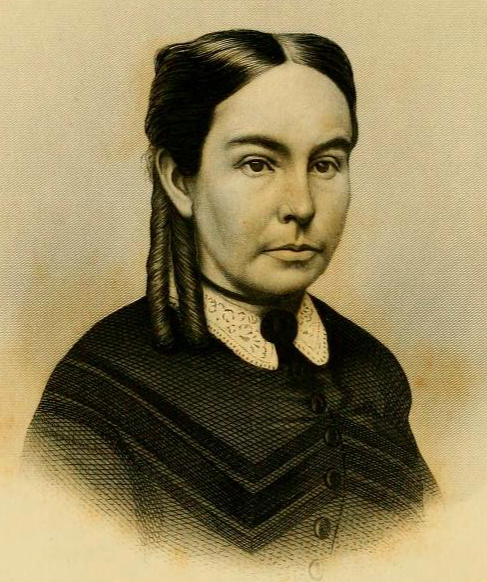Slavery’s Exiles: The Story of the American Maroons by Sylviane A. Diouf. New York University Press, 2014. Cloth, IBSN: 081472437X. $29.95.
 In 1838, authorities discovered a trapdoor hidden beneath a pile of straw in the Georgia woods. That door was the only entrance to a six-foot square earthen den, located close to a road and surrounded by houses and fields. They later learned that for more than a year, an enslaved man and woman had been living in that cave, making a home beneath the Southern soil. That fragmentary story is one of the dozens that Sylviane Diouf presents in Slavery’s Exiles, a history of marronage in colonial North America and the early United States. Diouf examines the lives of people who fled bondage and settled in the Southern wilderness. Slavery’s Exiles broadens our understanding of the varieties of enslaved experience, as well as the many ways that black peoples’ actions destabilized the peculiar institution.
In 1838, authorities discovered a trapdoor hidden beneath a pile of straw in the Georgia woods. That door was the only entrance to a six-foot square earthen den, located close to a road and surrounded by houses and fields. They later learned that for more than a year, an enslaved man and woman had been living in that cave, making a home beneath the Southern soil. That fragmentary story is one of the dozens that Sylviane Diouf presents in Slavery’s Exiles, a history of marronage in colonial North America and the early United States. Diouf examines the lives of people who fled bondage and settled in the Southern wilderness. Slavery’s Exiles broadens our understanding of the varieties of enslaved experience, as well as the many ways that black peoples’ actions destabilized the peculiar institution.
Maroons “went to the Southern woods to stay,” choosing exile as a path to autonomy (1). They were different, Diouf argues, both from runaways, who sought freedom in the North or the urban South, and truants, who left their owners but intended to return. In twelve thematic chapters, Diouf illuminates the people and places that constitute the diverse story of American marronage. Borderland maroons, like the man and woman who lived in the Georgia cave, made their homes on the fringes of slave owners’ land. From that position, they had opportunities to spend time with family and friends while sustaining themselves with supplies from nearby planters’ stores. Hinterland maroons moved deeper into the wilderness. In forests and swamps, they could create small communities, develop defenses, and pursue diverse economic activities. On borderlands and hinterlands, maroons worked for and traded with white southerners; marronage was an open secret, and those commercial interactions highlight the profit seeking at the heart of American slavery. Wherever they settled, enslaved people often chose marronage in hopes of preserving or creating families and communities. Diouf also examines important sites of marronage, including Bas De Fleuve, Louisiana, where maroons moved between borderlands and hinterland, and the Dismal Swamp of North Carolina and Virginia, where Nat Turner took shelter after his revolt. Throughout the book, Diouf presents stories through the voices of slaves, runaways, and freedpeople as well as the white legislators, judges, patrols, and news editors dedicated to preserving slavery.
Woven through these chapters is a history of African Americans’ relationships to southern landscapes. Ideas about mastery in the South demanded control of the land as well as the people who worked it. There was thus a complex power in the fact that maroons made their homes in wild spaces that lay just beyond the planters’ grasp. For many white Southerners, that wilderness reflected the qualities of the maroons who inhabited it; they were “untamed, out of control, savage, dark, and mysterious” (7). Maroons subverted slaveholders’ control of the land. Borderland maroons created domestic spaces in their caves and dens, which they concealed in trappings of the wilderness. One maroon was so adept in his use of camouflage that he earned the nickname Forest. Through stories like his, Diouf offers a valuable new examination of race, space, and power in the South.
Diouf also raises critical questions about enslaved peoples’ motives and choices in particular contexts. Maroons regularly stole in order to sustain themselves. Yet in a thought-provoking chapter, Diouf identifies maroon bandits as a subset of the larger populace who committed more extreme thefts and murders. To what extent did either the black perpetrators or the white prosecutors of those crimes draw distinctions among a range of illegal acts? What are the terms historians should use to describe slave criminality, and what did it mean to the parties involved? Additionally, Diouf’s emphasis on maroons achieving autonomy encourages further thinking about the nature, possibilities, and limitations of black freedom in a slaveholding society. When a maroon settled on the borderlands in order to remain close to her loved ones, her freedom was being determined by the geography of slavery and the power of a specific slaveowner. How can we understand, for instance, the experiences of the enslaved man who spent more than a year living in a hole beneath his mother’s cabin, faced with the constant fear of discovery? Diouf’s thorough recounting of maroon lives opens doors for deeper exploration of these sorts of questions. American marronage involved varieties of unfreedom, including limited movement, diet, and personal security. But Diouf shows that maroons felt differently than they had in slavery. She gives the last word to a man who, frostbitten and hungry, refused to return to his owner because marronage allowed him to “taste how it is to be free” (312).
Slavery’s Exiles will interest readers seeking a fuller understanding of enslaved peoples’ experiences in early America. The stories of American maroons illuminate the complexity of human bondage and the peculiar versions of freedom that could be available to black people in the slaveholding South.
Christopher James Bonner earned his Ph.D. at Yale University. He will begin teaching African-American history at the University of Maryland in the fall.
